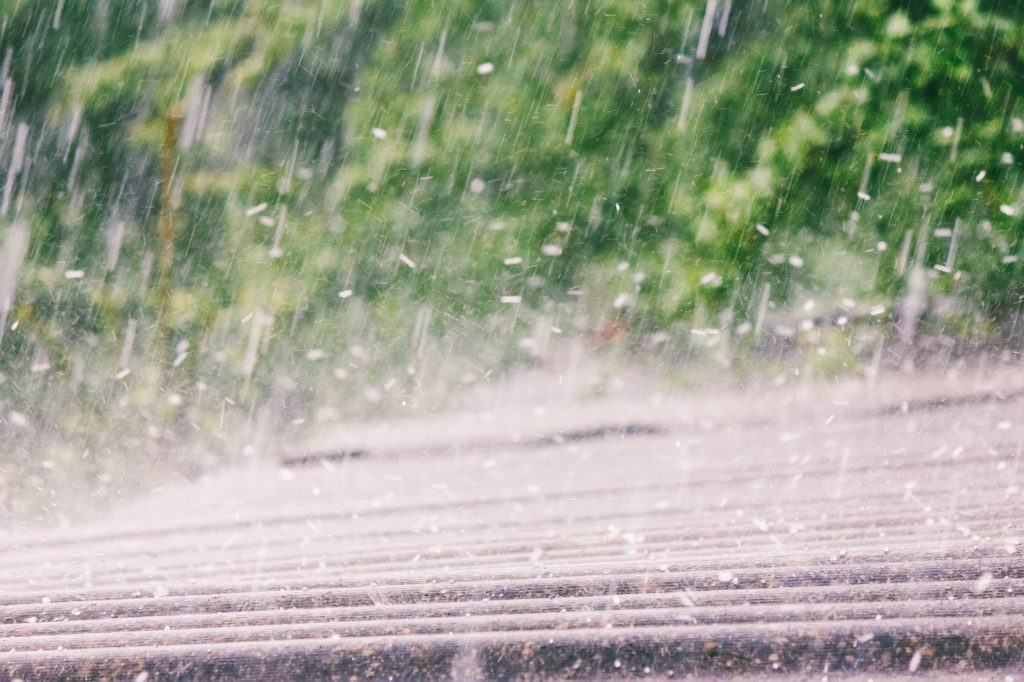How Hail Damage Deteriorates Your Roof and Home Value
 El Paso is not exactly known for harsh winters, snowstorms, or extreme weather. Well, summers can get pretty extreme! And yet, the Sun City sees its fair share of heavy winds and storms throughout the year. Many city residents would be surprised to learn that El Paso County ranked fourth in Texas in wind and hail damage, according to a study done by AllState in 2018. For many El Pasoans, this means sustained damage to vehicles and roofs. Many people might not even realize that their property has sustained damage and the roof goes unnoticed for many months, when it becomes a bigger problem and maybe costs far more to repair. So, what are some important things to note about hail damage? We thought we’d go through some common misconceptions and tips about how to look for damage.
El Paso is not exactly known for harsh winters, snowstorms, or extreme weather. Well, summers can get pretty extreme! And yet, the Sun City sees its fair share of heavy winds and storms throughout the year. Many city residents would be surprised to learn that El Paso County ranked fourth in Texas in wind and hail damage, according to a study done by AllState in 2018. For many El Pasoans, this means sustained damage to vehicles and roofs. Many people might not even realize that their property has sustained damage and the roof goes unnoticed for many months, when it becomes a bigger problem and maybe costs far more to repair. So, what are some important things to note about hail damage? We thought we’d go through some common misconceptions and tips about how to look for damage.
How Does Hail Damage the Roof?
If a hail storm is relatively mild or doesn’t last too long, people tend to doubt that damage was done to their property. And yet, even what seems like a mild hail storm can cause some damage that over time grows to be major damage. What happens is that hail comes down from the sky, sometimes at just the right angle, to knock off some of the granules off of the shingle.
So if you’ve seen pictures of hail damage before, you may notice that minor hail damage appears just like a little chip, often just showing as a small circle that’s a little bit darker than the rest of the shingle. What this indicates is that the ice knocked off some of the granules and is now exposing the asphalt matting. And while the damage is not going to leak right away, continuous exposure to weather and the elements will release more granules—which are the protective layer on the shingle— and slowly eat away at the matting. The UV rays from the sun will aid in this erosion, and as you know, El Paso has plenty of UV sun rays hitting it all the time. As sun rays eat at the asphalt content of the shingle, it loses viscosity and strength and begins to degrade.
A Common Misconception About Hail-Damaged Roofs
A big misconception is that hail damage is immediately detectable and visible. Not always. Sometimes the damage is subtle, but that subtle damage can grow and will substantially reduce the life of your roof. Hail will generally have to be the size of a golf ball to cause an immediate hole or bruising but small hail can still cause severe damage. There are two main things people should know about the consequences of hail damage.
- Potential for leaks and further damage. Yes, it’s true that hail damage might eventually lead to leaks. And yet, it might not do so for years or it might never lead to a leak. There are a lot of factors that come into play. It’s true that the risk of leaks increases with the amount of damage and that it’s likely that it will get worse, especially if exposed to damaging UV rays and even more wind and hail.
- The main concern should then be for the growing problem of the damage but also for the loss of value in a roof. Once you have a hail-damaged roof, the value of your home decreases and makes a dent in the investment you have made in your home. So a bit part of why you insure your home is to ensure its value and to help you maintain that value for the future. This is where your home insurance and insurance claims come in.
Tips to Look for Hail Damage and Prevent Further Loss of Value
Here are just a few things you can do after you suspect a hail storm hit or you experience a hail storm in your area.
- Inspect your home’s interior and roofing. Taking a moment to look around can go a long way. Check for dents in the gutters, downspouts, roof flashing, and roof vents, as well as your shingles. If you are comfortable (or someone in your household) is comfortable going up on the roof, you can take a quick peek yourself or call a professional to come to inspect.
- Consider contacting the National Weather Service. You can get access to a storm report that provides details on the storm that hit, as well as hail size, speed, and direction. This information can come in handy as a way to assess whether you are likely to have suffered damage on your roof.
- Contact experienced roofers. A quick visit from your trusted roofer will give you peace of mind and secure your investment. They will tell you whether you have some minor damage that can be quick and easy to repair.
Your Roof Protects You, So Why Not Protect It?
Here at El Paso Roofing, we have seen the kinds of damage that a relatively minor hail and/or wind storm can cause. Stay on top of it and your roof will last a lifetime.

